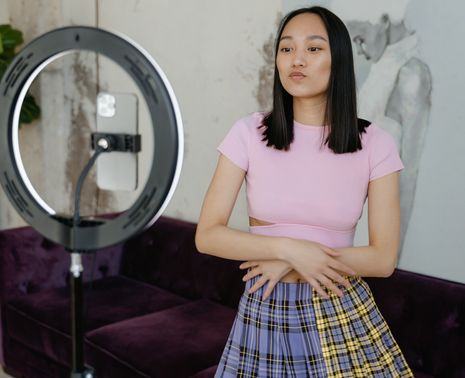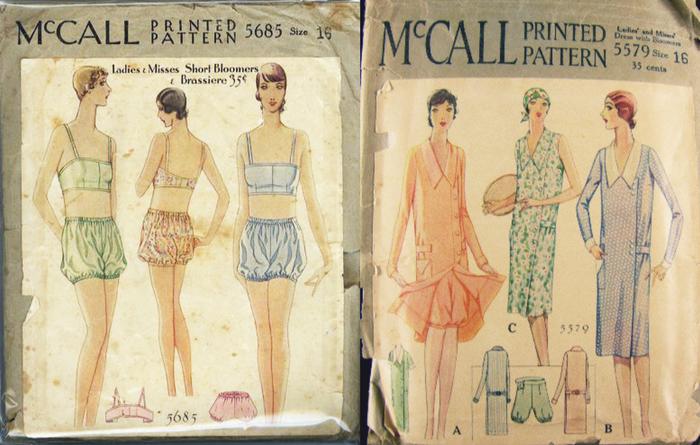TikTok Shop: The newest avenue for fast fashion
In the fight for our attention and our cash, Oketa Zogi-Shala investigates TikTok’s new method of winning over fashionistas

AVAVAV’s Milan show has recently made its rounds on social media. The FW23 show started with what seemed like wardrobe malfunctions, when models’ heels started snapping (not uncommon for runway shows). When the models started losing their clothing and eventually, the entire set (with the wall falling down to reveal backstage), it was clear that this was not the case. The show acted as a mirror to the superficiality of the fast fashion industry and its overconsumers.
A lot of individuals compounding this superficiality can be found on TikTok. Even if your entire page is filled with charity shop content, there will always be a £(enter extortionate amount of money) Shein haul that occasionally pops up on your For You page. A one minute video, of clothes that took less than two weeks to arrive to the buyer, are the result of Shein employees working 75 hour shifts, with no contracts or minimum wage requirements.
“Unlike with Shein, you do not even have to leave the app in order to buy the products that are promoted”
The success and virality of many of these videos may mean creators disconnect from the uncomfortable truth that they are benefitting from the exploitation of the human beings producing these garments. This is a disconnect that is also perpetuated by those who come across these videos and are spurred on to visit the website, to participate in the same overconsumption.
If you are on the fashion side of TikTok you most likely will have come across a recent development on the app: TikTok shop. Unlike with Shein, you do not even have to leave the app in order to buy the products that are promoted. The shop has been labelled the “QVC for Gen Z”, with marketers admitting that this is a way to “plant that seed of urgency- driving sales because time might run out”.
Given the inescapable nature of the shop, with live videos promoting clothing for sale popping up after every five TikToks, I decided to join them. I probed for more information about the items for sale, commenting: “How sustainable are the clothes?” and “are they ethically made?“. Initially I was just getting ignored; eventually I got muted. I was not being ignored because they could not see my comments, but because they did not want to answer the questions. When I scrolled through the shop @KatchMe to check the material of the garments, it was made clear to me why they did not want to answer my questions. All of the products I clicked on said that the material was polyester. Polyester is made from plastic which is not biodegradable; 70 million barrels of oil are used annually to produce it. The damage does not stop at the purchase of a polyester garment. Each wash of a polyester garment releases plastic microfibres, which enter our waterways and can harm marine life.
Another account I came across – and got muted on – was @MikeandNikia. Unsurprisingly, their garments were predominantly made up of polyester and viscose. The latter, like polyester, has its own environmental issues. In order to create viscose, 150 million trees need to be cut down each year. Carbon disulphide is then used to remove cellulose. This is an extremely toxic chemical which not only impacts the environment, but the workers dealing with it, with exposure being linked to health conditions like heart disease and strokes.
The damning reality is that the environmental and human impact of these shops is not at the forefront of the buyer’s mind. By ensuring that the buyer can link their card to their account and that they do not have to leave the app, TikTok has made transactions frictionless and easier than ever.
“In actuality, the shop is a lose-lose”
TikTok presents the shop as a win-win. Buyers are able to access what seem to be cheap products, as a result of reduced prices, bundles and giveaways. Sellers are then able to keep the majority of their income, with TikTok’s commission being 1.8% for the first 90 days and 5% thereafter. In actuality, the shop is a lose-lose. Buyers are receiving products that do not have a long lifespan, while sellers are relying on poor working conditions and harm to the environment to line their pockets.
TikTok has already succeeded in controlling our attention spans. They are not only satisfied with users spending 197.8 million hours per day on their app. Now, TikTok is increasingly making its way into our wallets. Flash sales, vouchers and giveaways are all designed to capture both our attention and our hard-earned cash, having repercussions that extend far beyond the individual scroller.
In Brave New World, Aldous Huxley writes: “We always throw away old clothes. Ending is better than mending”. Capitalistic societies, just like Huxley’s “World State”, depend on ‘ending’. How else are they to sustain themselves? Ending the lifecycle of a piece of clothing ensures continued consumption. It seems that Shou Zi Chew, the CEO of TikTok, has deployed TikTok shop to do exactly that.
 Comment / Plastic pubs: the problem with Cambridge alehouses 5 January 2026
Comment / Plastic pubs: the problem with Cambridge alehouses 5 January 2026 News / Cambridge businesses concerned infrastructure delays will hurt growth5 January 2026
News / Cambridge businesses concerned infrastructure delays will hurt growth5 January 2026 News / Cambridge academics stand out in King’s 2026 Honours List2 January 2026
News / Cambridge academics stand out in King’s 2026 Honours List2 January 2026 News / AstraZeneca sues for £32 million over faulty construction at Cambridge Campus31 December 2025
News / AstraZeneca sues for £32 million over faulty construction at Cambridge Campus31 December 2025 Interviews / You don’t need to peak at Cambridge, says Robin Harding31 December 2025
Interviews / You don’t need to peak at Cambridge, says Robin Harding31 December 2025










